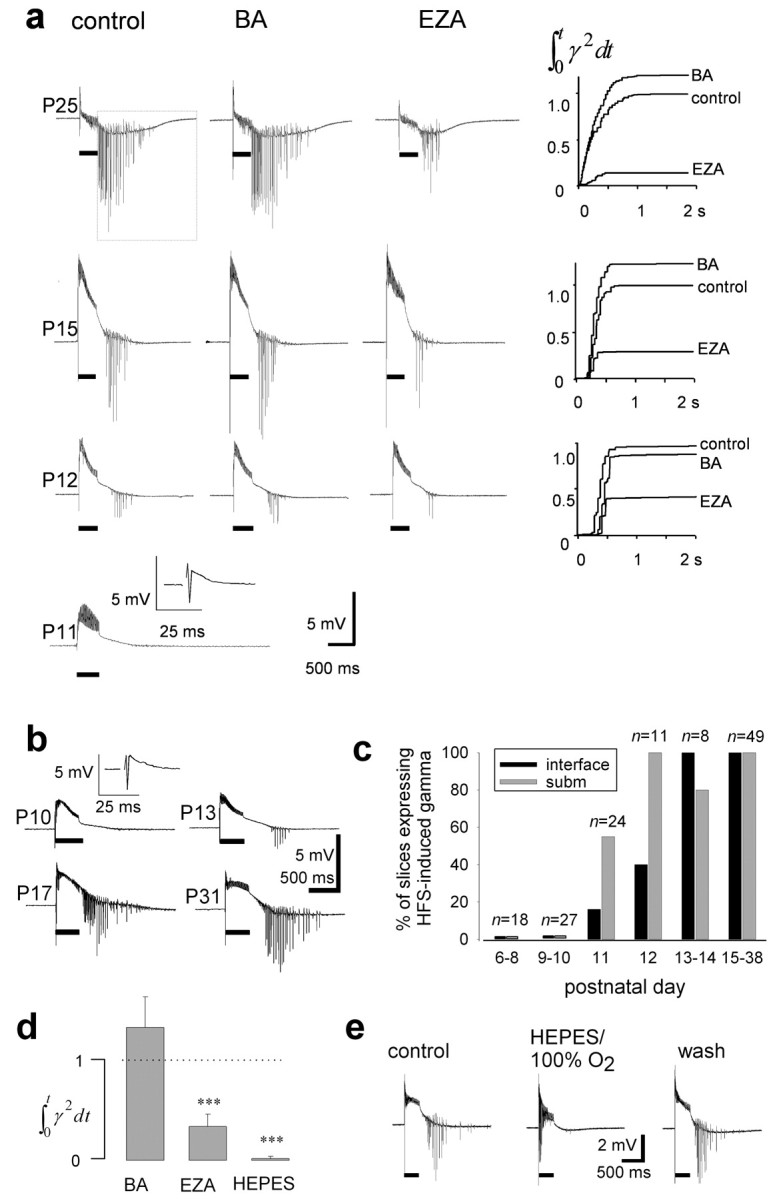Figure 1.

Postnatal development of HFS-induced gamma-frequency firing in CA1 stratum pyramidale and its dependence on intracellular but not interstitial carbonic anhydrase activity. a, Once HFS-induced gamma oscillation could be induced (40 stimulation pulses at 100 Hz; trains of stimuli indicated with horizontal bars), it was strongly inhibited by EZA (30–100 μm), whereas BA (10μm) had little effect. The plot showing the relative accumulation of apparent energy in the gamma-frequency range is from the time window starting 10 msec after the end of the train of stimuli (see dotted frame, P25). The field potential recordings were made in an interface chamber. b, Submerged slices show a developmental pattern of HFS-induced gamma oscillation similar to that observed in the interface chamber. Insets at P11 (a) and P10 (b) show a field response to single-pulse stimulation. c, Percentage of slices showing HFS-induced gamma oscillation plotted against postnatal day (n = 45 slices in interface and 92 in submerged chamber). d, The average of apparent energy in the gamma-frequency range in BA (n = 6), EZA (n = 6), and the nominally bicarbonate-free HEPES-buffered solution (n = 6), P23–P35, relative to that under control conditions. e, The population oscillations were abolished in a reversible manner in the absence of CO2/HCO3– (submerged slice).
